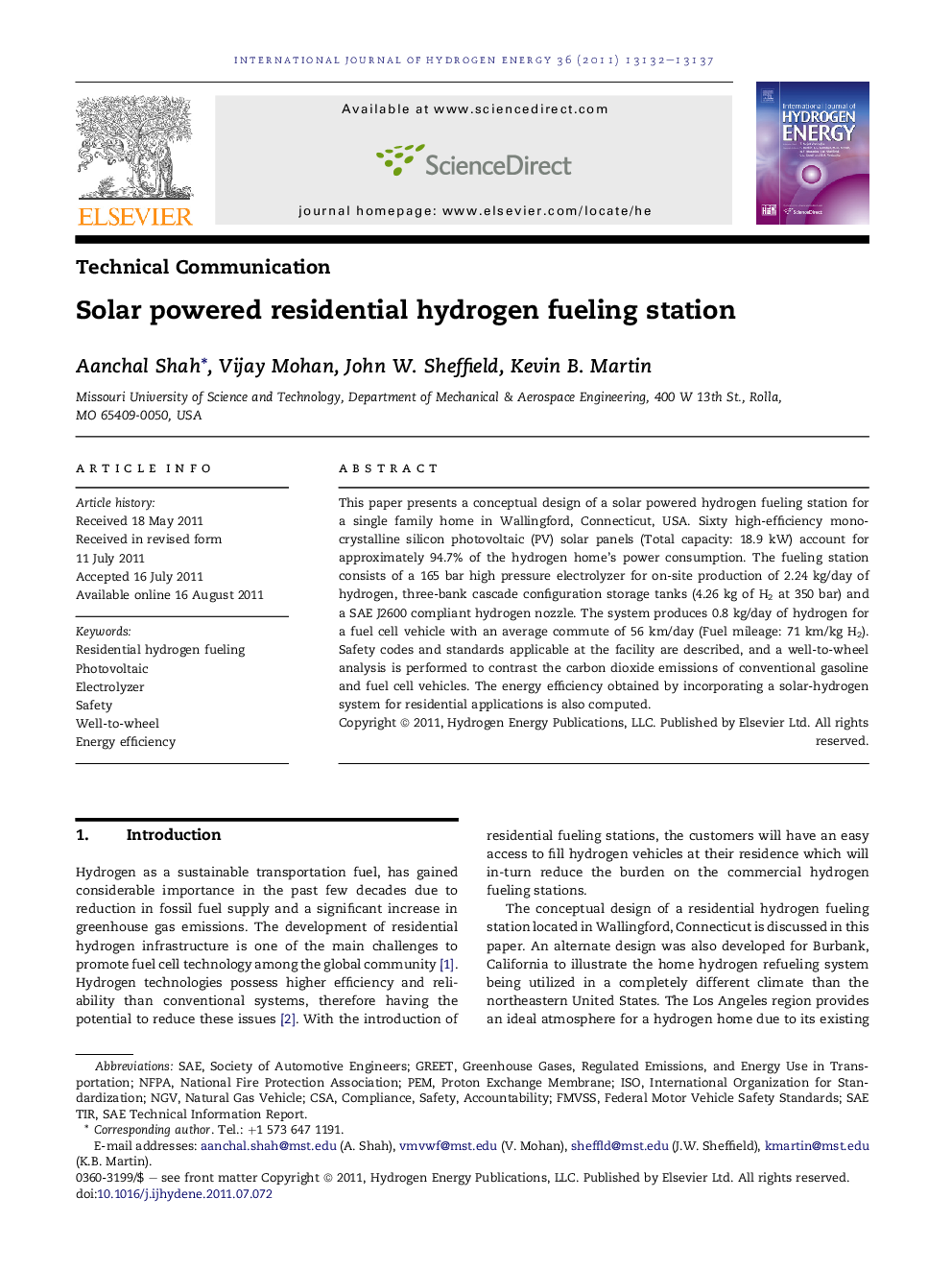| Article ID | Journal | Published Year | Pages | File Type |
|---|---|---|---|---|
| 1271980 | International Journal of Hydrogen Energy | 2011 | 6 Pages |
This paper presents a conceptual design of a solar powered hydrogen fueling station for a single family home in Wallingford, Connecticut, USA. Sixty high-efficiency monocrystalline silicon photovoltaic (PV) solar panels (Total capacity: 18.9 kW) account for approximately 94.7% of the hydrogen home’s power consumption. The fueling station consists of a 165 bar high pressure electrolyzer for on-site production of 2.24 kg/day of hydrogen, three-bank cascade configuration storage tanks (4.26 kg of H2 at 350 bar) and a SAE J2600 compliant hydrogen nozzle. The system produces 0.8 kg/day of hydrogen for a fuel cell vehicle with an average commute of 56 km/day (Fuel mileage: 71 km/kg H2). Safety codes and standards applicable at the facility are described, and a well-to-wheel analysis is performed to contrast the carbon dioxide emissions of conventional gasoline and fuel cell vehicles. The energy efficiency obtained by incorporating a solar-hydrogen system for residential applications is also computed.
► Sixty high-efficiency monocrystalline silicon photovoltaic (PV) solar panels account for approximately 94.7% of the hydrogen home’s power consumption. ► Considering the average daylight in Connecticut to be 4.74 h/day, the energy utilization of the home is 32.7 MWh/yr. ► The total carbon emissions produced by a hydrogen fuel cell vehicle – 34.8 g/km (56 g/mile) is far less than a gasoline vehicle – 272.2 g/km (438 g/mile). ► The required energy efficiency improvement for the Wallingford home is approximately 23%.
